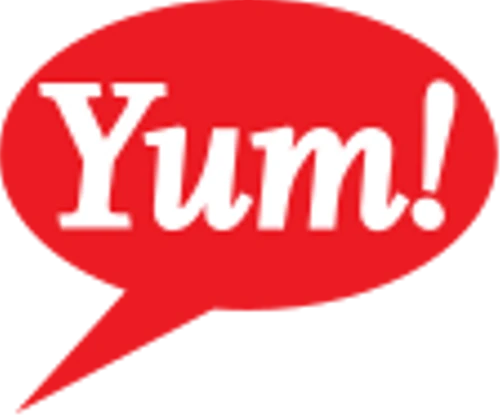- Home
- BKR vs YUM Comparison
BKR vs YUM Comparison
Compare BKR & YUM Stocks: Price Trends, ML Decisions, Charts, Trends, Technical Analysis and more.
Current Price
Current Price
Company Overview
Basic Information| Metric | BKR | YUM |
|---|---|---|
| Founded | 2016 | 1997 |
| Country | United States | United States |
| Employees | N/A | N/A |
| Industry | Metal Fabrications | Restaurants |
| Sector | Industrials | Consumer Discretionary |
| Exchange | Nasdaq | Nasdaq |
| Market Cap | 48.8B | 41.5B |
| IPO Year | N/A | 1997 |
Fundamental Metrics
Financial Performance| Metric | BKR | YUM |
|---|---|---|
| Price | $47.38 | $142.31 |
| Analyst Decision | Strong Buy | Buy |
| Analyst Count | 19 | 19 |
| Target Price | $52.67 | ★ $163.00 |
| AVG Volume (30 Days) | ★ 6.6M | 2.1M |
| Earning Date | 10-23-2025 | 11-04-2025 |
| Dividend Yield | 1.94% | ★ 1.99% |
| EPS Growth | ★ 30.28 | N/A |
| EPS | 2.90 | ★ 5.13 |
| Revenue | ★ $27,711,000,000.00 | $8,061,000,000.00 |
| Revenue This Year | N/A | $9.13 |
| Revenue Next Year | $2.98 | $9.53 |
| P/E Ratio | ★ $16.32 | $27.77 |
| Revenue Growth | 1.50 | ★ 11.60 |
| 52 Week Low | $33.60 | $122.13 |
| 52 Week High | $51.12 | $163.30 |
Technical Indicators
Market Signals| Indicator | BKR | YUM |
|---|---|---|
| Relative Strength Index (RSI) | 43.36 | 37.61 |
| Support Level | $48.61 | $146.94 |
| Resistance Level | $51.12 | $155.23 |
| Average True Range (ATR) | 1.37 | 2.57 |
| MACD | -0.12 | -1.02 |
| Stochastic Oscillator | 7.99 | 2.09 |
Price Performance
Historical ComparisonAbout BKR Baker Hughes Company
Following a 2022 reorganization, Baker Hughes operates in two segments: oilfield services and equipment, and industrial and energy technology. The firm's oilfield services and equipment segment is one of the Big Three oilfield-services players, along with SLB and Halliburton, and mostly supplies to hydrocarbon developers and producers, including national oil companies, major integrated firms, and independents. Markets outside of North America buy roughly three-fourths of the segment's offerings. Baker Hughes' industrial and energy technology segment manufactures and sells turbines, compressors, pumps, valves, and related testing and monitoring services for various energy and industrial applications.
About YUM Yum! Brands Inc.
Yum Brands is a US-based restaurant operator featuring a portfolio of four brands: KFC (31,981 global units at year-end 2024), Pizza Hut (20,225 units), Taco Bell (8,757 units), and Habit Burger & Grill (nearly 400 units). With more than $65 billion in 2024 systemwide sales, the firm is the second-largest restaurant company in the world behind McDonald's ($131 billion). Yum is 98% franchised, with the largest franchisee, Yum China, spun out in 2016, after which Yum China agreed to pay 3% royalties to Yum Brands in perpetuity. Yum is the newest evolution of Tricon, formerly a division of PepsiCo, and generates the bulk of its revenue from franchise royalties and marketing contributions.

